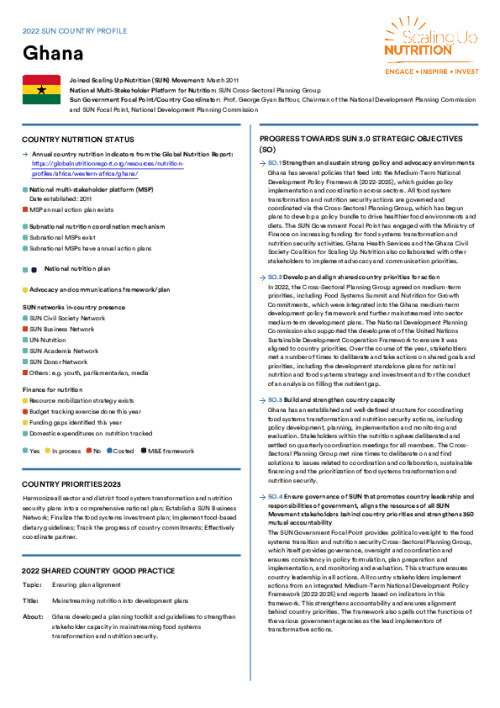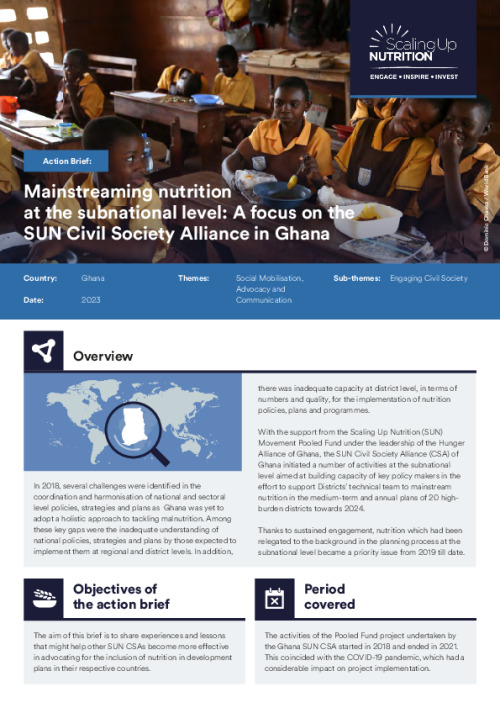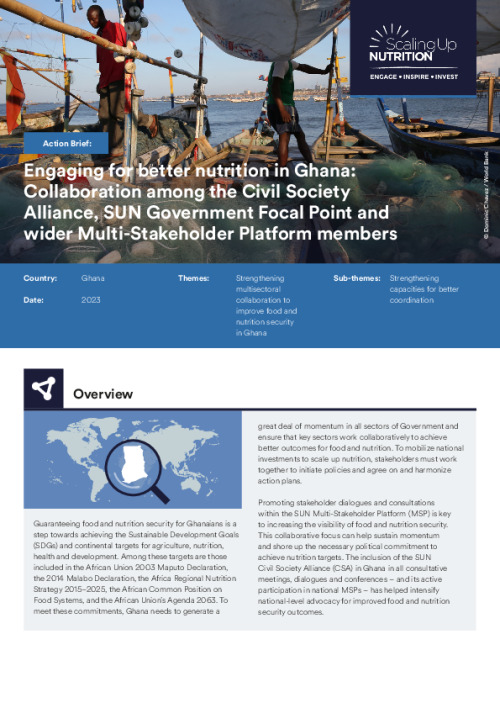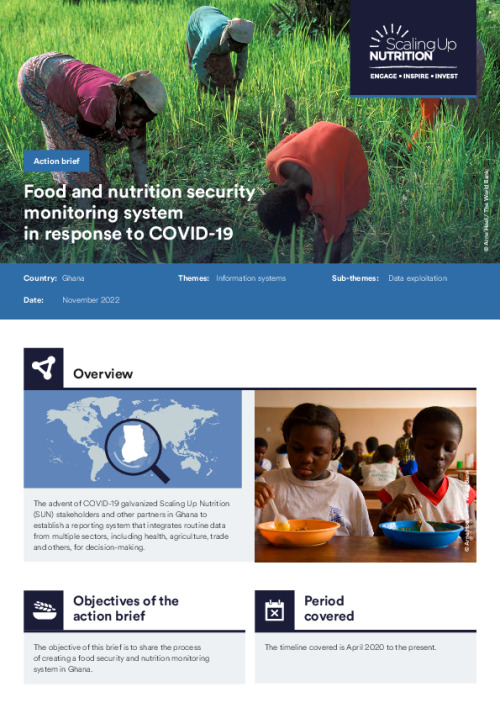
Ghana
Joined Scaling Up Nutrition (SUN) Movement
March 2011
National multi-stakeholder platform for nutrition
SUN Cross-Sectoral Planning Group
Sun Government Focal Point/Country Coordinator
Prof. George Gyan Baffour, Chairman of the National Development Planning Commission and SUN Focal Point, National Development Planning Commission
Country nutrition status 2022
- Yes
- In process
- No
- Costed
- M&E framework
National multi-stakeholder platform (MSP)
National nutrition plan
Advocacy and communications framework/plan
Subnational nutrition coordination mechanism
SUN networks in-country presence
Finance for nutrition
Country priorities 2022
2022 Shared country good practice
Mainstreaming nutrition into development plans
Ensuring plan alignment
Ghana developed a planning toolkit and guidelines to strengthen stakeholder capacity in mainstreaming food systems transformation and nutrition security.
Progress towards SUN 3.0 Strategic Objectives (SO)
Ghana has several policies that feed into the Medium-Term National Development Policy Framework (2022-2025), which guides policy implementation and coordination across sectors. All food system transformation and nutrition security actions are governed and coordinated via the Cross-Sectoral Planning Group, which has begun plans to develop a policy bundle to drive healthier food environments and diets. The SUN Government Focal Point has engaged with the Ministry of Finance on increasing funding for food systems transformation and nutrition security activities. Ghana Health Services and the Ghana Civil Society Coalition for Scaling Up Nutrition also collaborated with other stakeholders to implement advocacy and communication priorities.
In 2022, the Cross-Sectoral Planning Group agreed on medium-term priorities, including Food Systems Summit and Nutrition for Growth Commitments, which were integrated into the Ghana medium-term development policy framework and further mainstreamed into sector medium-term development plans. The National Development Planning Commission also supported the development of the United Nations Sustainable Development Cooperation Framework to ensure it was aligned to country priorities. Over the course of the year, stakeholders met a number of times to deliberate and take actions on shared goals and priorities, including the development standalone plans for national nutrition and food systems strategy and investment and for the conduct of an analysis on filling the nutrient gap.
Ghana has an established and well-defined structure for coordinating food systems transformation and nutrition security actions, including policy development, planning, implementation and monitoring and evaluation. Stakeholders within the nutrition sphere deliberated and settled on quarterly coordination meetings for all members. The Cross-Sectoral Planning Group met nine times to deliberate on and find solutions to issues related to coordination and collaboration, sustainable financing and the prioritization of food systems transformation and nutrition security.
The SUN Government Focal Point provides political oversight to the food systems transition and nutrition security Cross-Sectoral Planning Group, which itself provides governance, oversight and coordination and ensures consistency in policy formulation, plan preparation and implementation, and monitoring and evaluation. This structure ensures country leadership in all actions. All country stakeholders implement actions from an integrated Medium-Term National Development Policy Framework (2022-2025) and reports based on indicators in this framework. This strengthens accountability and ensures alignment behind country priorities. The framework also spells out the functions of the various government agencies as the lead implementors of transformative actions.


